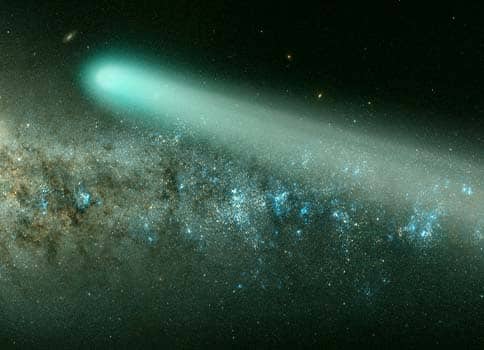A green comet which approaches Earth once in 50,000 years may be visible to the naked eye for those intrepid enough to travel to areas of the island unaffected by light pollution.
Astrophysicist Stelios Tsangaridis told the Cyprus News Agency that the comet which will reach its closest distance to Earth on February 1, will be visible in the skies as a “celestial smudge”.
The best night to view it from Cyprus, the astrophysicist said, is February 5, but only in rural areas, as light pollution, and the fact of the waxing Moon, will make it invisible in cities.
Comets are composed mostly of ice with a dense metallic core, the astrophysicist explained. As they approach the sun their surface material vaporises creating the nebulous halo around their centre and their characteristic ‘tails’ – one of which is composed of ice particles that mirror starlight.
The second tail consists of dust particles, which do not reflect light as efficiently.
This comet is particularly interesting for being green Tsangaridis explained, a property caused by presence of molecular carbon on its surface.
“The last time it was in our neighborhood…people were still living in caves,” Tsangarides said.







Click here to change your cookie preferences